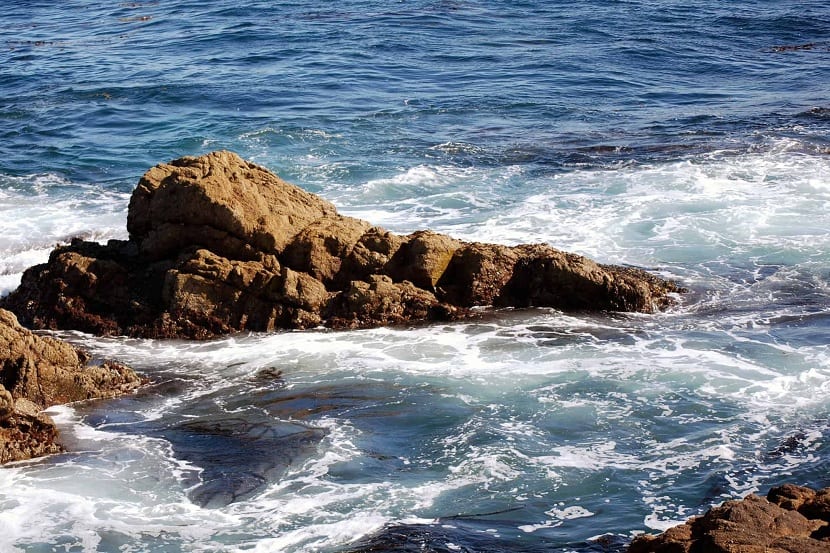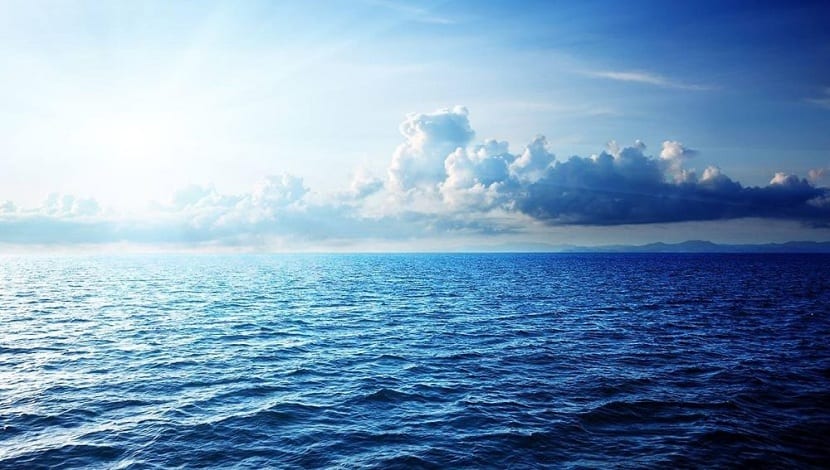
Surely more than once you have been talking or seeing about the seas and oceans and you have been confused when calling something sea and another ocean. How are they really different? To better differentiate both geographically different and ecologically distinct areas, we use the concepts of seas and oceans. Both are large masses of salt water that are home to flora, fauna and other aspects that are of interest to the economy of the countries, such as the deposits that we have in the Continental platform.
Do you want to know what are the main differences between seas and oceans? In this article we are going to tell you in great detail.
What is an ocean

The first thing we have to know to know the differences between seas and oceans is to know what each thing is separately. In this way, we can finish reading this article and have no more doubts about it. The oceans are large expanses of salty water that are part of the planet's hydrosphere. They are those that cover most of the entire surface of the Earth. There are 5 oceans in the entire world that separate the waters from the entire entire world. Let's see what they are:
- Atlantic Ocean. It is the one that is separating the continents of America, Europe and Africa. It is the most important of all since, commercially, it is a large point of exports and imports. In addition, it has the conveyor belt that redistributes the heat and cold of the water masses from the equator to the north pole in a balanced way.
- Pacific Ocean. It is the one with the largest extension of all the oceans. Its area is approximately 180 million square kilometers. It is located between the continents of Asia, America and Oceania.
- Indian Ocean. It is between Africa, Asia and Oceania and is smaller. It has an area of 74 million square kilometers.
- Antartic Ocean. It only occupies 14 million km2 and covers the entire North Pole.
- Antartic Ocean. It occupies about 22 million km2 and is the one that extends through the south pole.
Definition of sea

Now we know what the oceans are and which ones are in the world. In the case of the seas it is something else entirely. The seas are large expanses of salty water that may or may not be connected to an ocean. They usually are. They are much smaller than an ocean and are also shallower. They do not usually have natural outlets and are close to Earth. There are waves in the seas and not in the oceans.
We can make a list of the main seas around the world although, unlike the oceans, there are many more around the world apart from this list. Here we only put the most important ones:
- Mediterranean Sea. It is the largest extension of the continental interior on the entire planet. It is between Africa, Asia and Europe.
- Baltic Sea. It is a sea located in the northeast of Europe. Its area is 420 thousand square kilometers.
- Caribbean sea. Surely you have heard this sea a thousand times as a dream vacation destination. It is located between Central America and South America with an extension of 2,7 million kilometers.
- Caspian Sea. It is a sea that is located in the southeast of Europe and has an area of 371 thousand square kilometers.
- Dead Sea. Another of the seas that you will surely have heard of it. It is located in the Middle East.
- Black Sea. Famous for the color of its waters, it is located between Europe, Anatolia and the Caucasus.
- Red Sea. Also famous for its color. It is located between Africa and Asia.
Main differences between seas and oceans

Now that we know the definitions of seas and oceans and the main ones from around the world, let's see what the differences are. The main difference between seas and oceans is the extent. The seas are all smaller than the oceans. They are usually closed and are located between the land and the oceans. The oceans are open waters and much deeper.
Unlike the seas, there are numerous Ocean currents that affect the circulation of water and the climate. These ocean currents can form hurricanes, which is almost unlikely in the seas. There are some seas that do not have a very large extension, so they are considered as large saltwater lakes. For example, ehe Caspian Sea, the Dead Sea and the Aral Sea are considered large saltwater lakes because they are not very large.
Another aspect is the temperature. Because the oceans reach greater depths, they usually also reach lower temperatures. The seas closer to the earth's surface receive more solar radiation and are warmer than the oceans. This varies in different seas, so it is not conditioning. For example, the waters of the Mediterranean Sea are warmer than those of the Dead Sea.
While the seas are being desertified and shrinking in volume due to global warming, the seas and oceans have increased in volume due to the melting of the polar ice caps.
In terms of biodiversity, the seas have a greater amount of biodiversity than the oceans. This is because they receive a greater amount of solar radiation and have less depth. Therefore, they are areas where a greater number of species can be housed. In the oceans we find a smaller number of species, but they are species capable of adapting to different environments and depths. Thus, many species that inhabit the depths cannot migrate to coastal areas.
Although there is more biodiversity in the seas, there is also a higher death rate, since they are more exposed to environmental pollution. The oceans, being larger and farther from the coast, they tend to better withstand the environmental impacts of humans.
I hope that with this information you are clear about the differences between seas and oceans.